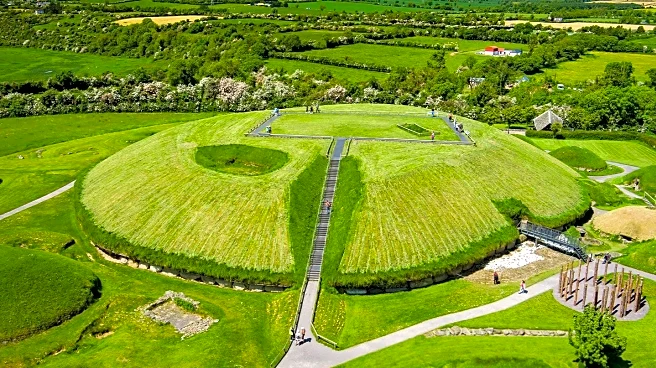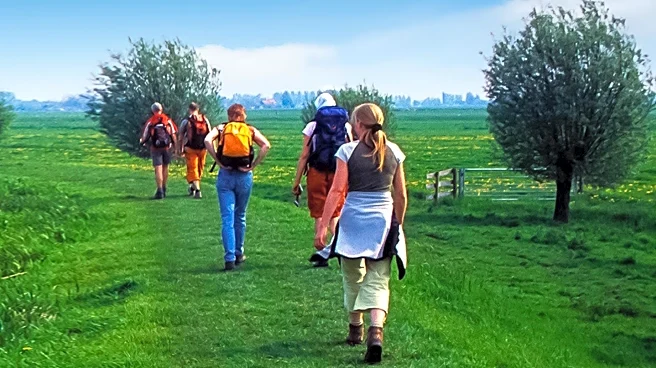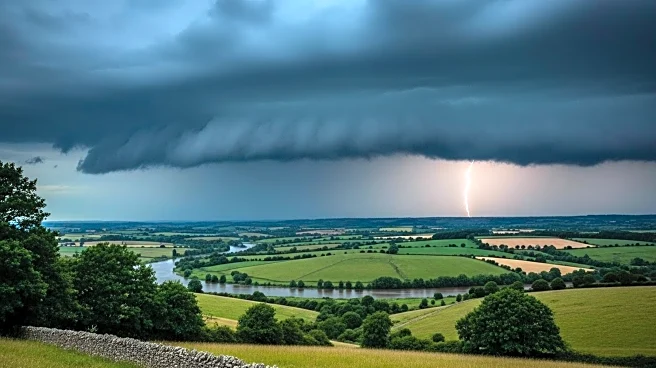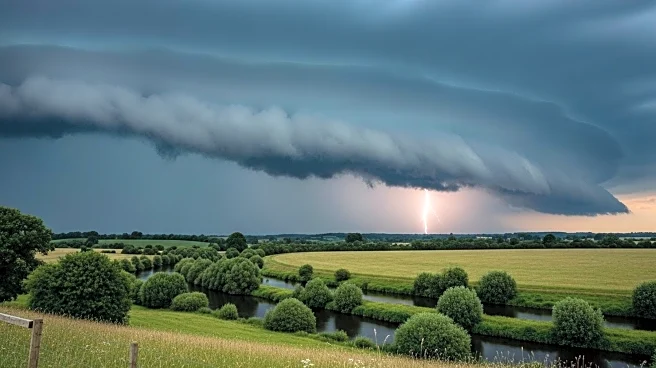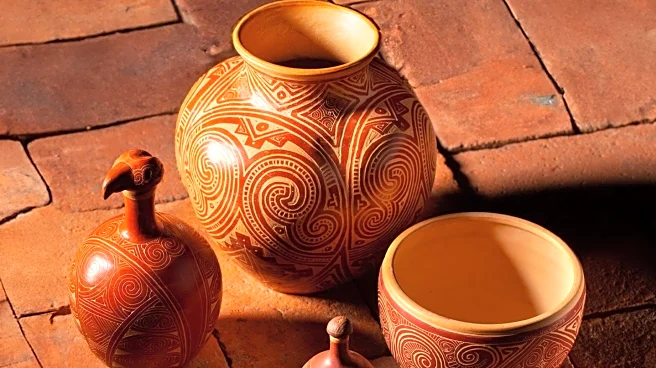What is the story about?
What's Happening?
A new art installation has been created next to the iconic Cerne Abbas Giant in Dorset as part of a £40,000 arts project funded by the Arts Council and Dorset National Landscape. The project, titled 'Consequences', is part of the national Nature Calling arts initiative, which aims to connect people with well-known landscapes. The new figure was composed by asylum seekers, schoolchildren, and individuals with learning disabilities from Yeovil, Somerset. Artist Becca Gill led the creation, using materials collected from the giant's hill, including chalk, flowers, and butterfly wings. The artwork features unique elements such as flower eyes, butterfly ears, and tentacle legs, symbolizing inclusivity and nature appreciation.
Why It's Important?
This project highlights the role of art in fostering community engagement and inclusivity. By involving diverse groups in the creation process, the initiative promotes social cohesion and provides a platform for marginalized voices. The temporary installation not only enhances the cultural landscape of Dorset but also serves as a reminder of the power of art to bring people together. The involvement of asylum seekers and children in the project underscores the importance of integrating different communities into cultural and artistic expressions, potentially influencing future public art projects and policies.
What's Next?
The 'Consequences' artwork will be dismantled and will tour the region, starting with a celebratory parade on Summerhouse Hill in Yeovil on September 13 and 14, before moving to Corfe Castle the following weekend. This touring aspect of the project will allow more communities to engage with the artwork, potentially sparking similar initiatives in other regions. The success of this project may encourage further investment in community-driven art projects, fostering greater cultural inclusivity and appreciation.
Beyond the Headlines
The project raises questions about the role of public art in addressing social issues and the potential for art to act as a catalyst for change. By involving asylum seekers and individuals with learning disabilities, the project challenges traditional narratives and encourages a broader understanding of community identity. This initiative may inspire discussions on how art can be used to address social justice and environmental concerns, promoting a more inclusive and sustainable approach to cultural heritage.
AI Generated Content
Do you find this article useful?
